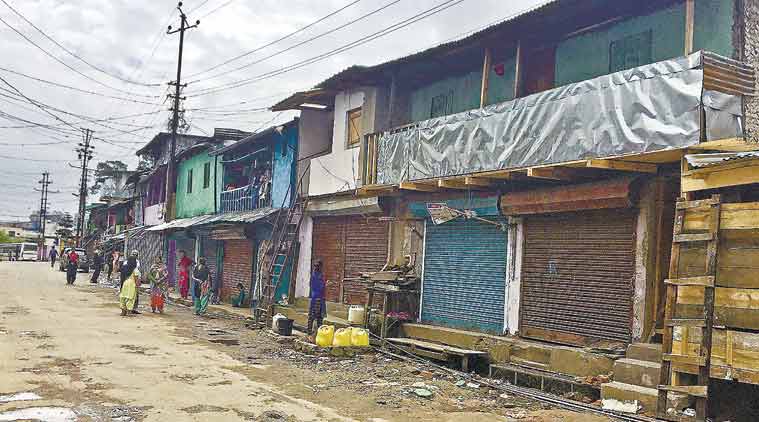Shillong: Impossible homeland
For those exiled from Shillong over the decades by a xenophobic politics, a willful amnesia has been the only way to move on.

If the struggle of man against power is the struggle of memory against forgetting, the non-tribal residents of Shillong had not even put up a fight. (Photo: Abhishek Saha)
In the enforced darkness of a blackout in Shillong, Dr Dam sits in an empty house, scanning newspapers by the light of a lamp. The year is 1979, and an anti-Bengali agitation is at its peak. A few days ago, seven non-tribal passengers have been dragged out of a bus as it entered the city, and killed. “The knives of the long night are being sharpened, and yet [the darkness] never seems to reach far enough to affect the big cities in the plains. Why does no one in Delhi know what is happening here? Why do the killings and the lootings not appear in the Calcutta paper that gets here three days late?” wonders the protagonist of The Point of Return, a 2002 novel by Siddhartha Deb.
Four decades on, at least something has changed. An “outsider”-native clash in Shillong has made it to the national newspapers in no time. The targets of xenophobic violence from 1979 to the early 1990s — Bengalis, Nepalis and Biharis — had waited, like Dr Dam, for the nation to enquire about their well-being. The nation did not want to know.
I grew up in Shillong in those troubled decades — a non-tribal Bengali in the largely tribal state of Meghalaya. As children, we did not keep track of the violence, but the menace we felt as a second skin — in the urgency to return home before dusk; in the awareness that we were not welcome or allowed in certain areas; in the wide valley of suspicion that lay between the Khasis and non-tribals; the long curfew days that stretched before us after each spurt of violence; and the sense of shame at our community’s powerlessness, its landlessness.
As Shillong went under curfew in the last few weeks, after a clash between Dalit Sikhs and Khasis, my thoughts went back to Dr Dam’s vigil. Deb’s novel was the first articulation of the unspoken trauma of being a dkhar (the Khasi word for foreigner) that I had encountered, a rare examination of the precarious life the non-tribal minority has led in this beautiful state. In the absence of evidence, reportage or court proceedings, fiction provided me a way to access — and acknowledge — this painful history.
If the struggle of man against power is the struggle of memory against forgetting, the non-tribal residents of Shillong had not even put up a fight. After the violence of 1979, 1987 and 1991-92, thousands simply picked up the pieces of their lives and left the region. The B N Sharma Commission, set up after 1991-92, estimated that 15 years of communal violence in Meghalaya had displaced thousands and killed hundreds of non-tribal people in Shillong. A young teenager, the sister of a schoolmate, died in a petrol bomb attack during the 1992 Durga Puja celebrations; earlier, a pregnant woman had been raped and lynched.
Those who stayed like us, shrugged and moved on, choosing to forget, to shrink their lives, unwilling to reopen old wounds when no redress was in sight. The slogans remained: Go back, Bangladeshis.
It wasn’t so simple. Shillong began as a colonial project in the 1870s, when Assam was carved out of the Bengal presidency. It included not just the Khasi, Garo, Jaintia Hills but also Cachar and Sylhet, those districts from which the Sylheti-speaking Bengalis came. As the town began to grow, it drew Assamese as well as Nepalis and Marwaris, who came here for work and trade. Cosmopolitanism had arrived, decreed by a British fiat to create a salubrious retreat for the white men.
Those first generations of economic migrants were followed by the thousands more who were spat out by Partition. Sylhet, earlier a part of Assam, was made over to the other side, and its Hindu residents turned into refugees. Still, in the first two decades of Independence, settlers and natives lived in relative harmony, despite the resentment against the substantial Bengali presence in both trade and lower bureaucracy.
The Assam agitation, directed against the Bengalis, in the late 1970s, changed that. It ignited a Khasi sub-nationalism that saw no place for the non-tribal in Shillong, that indeed saw them as racially inferior. By the time I was born, the first purge of Bengalis from mixed localities such as Mawlai and Jaiaw was complete. Successive riots led to a steady bleeding of Bengalis from the state — the logic of Partition leading to their double exodus, once from pre-Partition Bengal and then from the Northeast.
Meghalaya hasn’t seen the kind of conflagrations and conflict that other northeastern states have suffered. Its resources and power lie with “its” people. Over the years, a tribal elite has prospered and seized power, contrary to fears of a mainland invasion. That affluence has not trickled down to all sections of the tribal society — Shillong is a far more unequal city than it used to be. Its young men, many of whom ran amok at Punjabi Lane, have steadily grown disenchanted with its political process. As a result, its politics has fallen back on the fear of the “outsider” to rally the people. Four years ago, an agitation demanding an Inner Line Permit for Meghalaya, ostensibly to end illegal migration from Bangladesh, led to the death of a Marwari businessman. He died of burn injuries from an old weapon — the petrol bomb.
This time, the dkhar is the Mazhabi Sikh community, which was brought by the British to work as scavengers and sweepers. While the violence is on leash, the shocking, unconstitutional demand to evict them from the heart of the city remains on the agenda of the powerful and violent Khasi Students’ Union.
Perhaps, in the sweepstakes of bloodshed that the region has seen, the Bengalis of Meghalaya got away cheap. Perhaps, their surrender was pragmatic. But, as the turmoil in Assam over the National Register of Citizens shows, the impossibly tangled legacy of 1947 is far from being settled. Whose land is it? Who decides who gets to stay?
For those of us scattered through the country, in the absence of answers to these questions, a collective amnesia is the only way to move on. Only a longing remains, for an impossible homeland.
amrita.dutta@expressindia.com
For all the latest Opinion News, download Indian Express App
More From Amrita Dutta
- Art is where I take shelter and how I respond: Anuradha RoyAnuradha Roy on her new novel, the perils of nationalism and what sustains her at a time of toxic change...
- Ireland overturns abortion ban: Justice in Dublin comforts a father in BelgaumOver the years, there have been many challenges to Ireland’s conservative stance on abortion — which, in effect, forces women to travel to the UK…
- ‘Time for Deve Gowda sir too. PM in 2019’Shivkumar Aaradhya had placed his trust — not so much in his party’s tactics in the Karnataka Assembly in three hours — but in Kaliamma…







































No hay comentarios:
Publicar un comentario